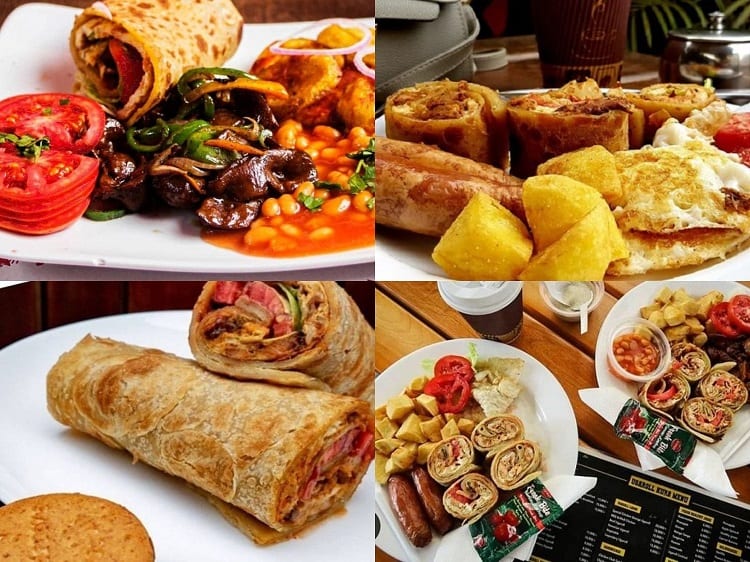By James Wire
I am a firm believer in starting business the simplest way possible. While one may have this big vision about where they want to go, a journey of 1000 miles always begins with one step. Most times, we want to start that journey with 100 steps and hence get paralysed at the mere thought of gathering those 100 initial steps.
Recently, while reading through #FridayBusinessUnusualWithDM on Facebook run by my OB Dickson Mushabe, the issue at hand was to do with this person who had lost his job, had only UGX 100,000/= left and wanted to invest in a business without spending on consumption activities. That is when I realised that it was high time I shared on how one can start business with less than UGX 100,000/= (US$ 30).
The assumption in all this is that;
- You already have some requisite skills
- You are based in Uganda
- You are ready to operate below the radar
- You don’t despise work
- You have been pushed hard enough that you want to make a positive change in your life
- You are ready to work with others
- Above all, you are tired of talking and ready to act.
It is kind of unbelievable when one tells you that you can start business with such a seemingly measly sum of money which others easily spend on a lunch time outing. The fact is that it is very possible.
After listing down all possible business opportunities, I decided to group them in three categories (and this is to say that my list is not necessarily exhaustive). They are;
- Food
- Household
- General
Due to the detail each category needs, I shall split them into three posts with the first one dealing with Food.
Food
If there is any industry in Uganda that provides you with ready income without so much hustle, it’s this one. The food business is less likely to expose you to the rampant corruption and opportunity politicisation that is faced by most other industries. People need to eat food, you don’t have to bribe them to buy your food nor do they have to know what political party you subscribe to before they can purchase. Some of the business ideas here include;
1. Snacks: These sell a lot. They are needed for home and school consumption. Many parents with school going children always have to buy snacks for the children to take to school daily. Offices need snacks daily for their tea breaks. You could choose to sell directly to the consumers or to retailers like shops and supermarkets. Some of the most popular snacks I always see around are; Chapati, Sumbusa, Mandazi, Cookies, Cakes, Pop Corn, Daddies, Roasted Groundnuts, Dried fruits like Mangoes, fried Silver Fish (mukene), Crisps among others.
Let us take the example of the Chapati Snack. To start off, all one needs is; A frying pan, A charcoal stove, Charcoal, Cooking Oil, A roller, Baking Flour, Baking Powder and a location. Depending on where you buy them, the frying pan, Charcoal Stove and Roller shouldn’t cost you more than UGX 60,000/= especially if you can settle for second hand equipment. Charcoal worth UGX 2000/=, Cooking oil (half a litre) at UGX 3,500/= , Baking Flour (1Kg) at UGX 7000/= and Baking Powder at UGX 1000/=. Choose a roadside location that has some decent human traffic and you probably pay nothing for it or a daily rental fee of utmost UGX 2,000/= . Rent a small table for UGX 1,500/= a day. Purchase packaging material to last you close to three days for UGX 2,000/=. So far, you have spent a total of UGX 79,000/=. This should enable you start off from day one and thereafter, the returns from the business are expected to provide the initial cash flow required to re-invest.
This example shows us that going forward from day zero, the operating costs will be centred around Purchasing Cooking Oil, Charcoal, Baking flour, Baking powder, Table and location rental. This implies that you need to raise at least UGX 17,000/= from sales daily to have operational capital. As demand grows, you get an opportunity to sell more by procuring more raw material. I did talk to my favourite Chapati vendor and he confessed that profitability for him comes in after he has used at least 1.5 Kilograms of Baking flour. He has two key demand periods during the day and they are from 6am to 8am in the morning and 5pm to 9pm in the evening. In each of those periods, he uses up at least four (4) kilos of baking flour. Through my own judgement, this gives him revenues in the region of UGX 80,000/= to UGX 150,000/= daily.
2.Produce: This is one hell of a cash cow that many educated urbanites have never understood well hence leaving it for the others to exploit. The volume of food produce transacted in Uganda on a daily basis is simply massive and the margins usually made by the middle men are outrageous. Every food product you find in the market or supermarket has a supply chain associated with it. It probably emanates from some peasant’s garden, then is amalgamated by a village trader who purchases from the different peasant farmers in order to accumulate substantial volumes that are then sold to a larger trader who transports the produce to urban areas for eventual wholesale to retailers.
Products in this category that are easy to chance upon include; Maize, Millet, Rice, SimSim, Onions, Bananas, Tomatoes, etc. By simply identifying a place to purchase the produce, all one does is to ensure it arrives safely in an urban centre and you will make a decent margin selling to the Shop keepers or directly to consumers.
Take the example of Rice, during its season, one can buy a Kilogram of Milled rice for as low as UGX 1,400/= in the rice growing areas. Simply transporting that rice to an urban area like Kampala would guarantee you a wholesale price of not less than UGX 2,300/=. This gives you a margin of at least 60%. An investment of UGX 80,000/= in rice should yield you not less than 130,000/=. Should you choose to retail the rice like my sister does, the margin gets even much bigger.
I once tried my hands in the Tomato Processing business and this involved me and my wife leaving home at 4am just to ensure that we were at Nakawa Market by 4:30am to buy Tomatoes straight from the farmers who had delivered. At that time of the day, a crate of Tomatoes then cost UGX 40,000/=. However, what intrigued me was that by 6am, the same crate would cost not less than UGX 75,000/=. Come 7pm, no one would be selling in crates anymore, they split up the tomatoes into small basins and as a result, a crate worth would fetch you at least UGX 130,000/=. Studying these trends showed me that one could as well choose to simply work for three hours daily i.e. from 4am to 7am and retire for the day comfortable. With such an idea, all you need is to invest UGX 70,000/= in purchasing tomatoes today from the farmers who deliver and you will be able to multiply your money by at least 40% daily.
3. Outside Catering: People eat food everyday, in offices, on occasions and everywhere. Many like me do not like leaving office to look for food to eat. However, if the food found us in the office, we wouldn’t mind buying. As a shrewd entrepreneur, you can position yourself as someone who identifies the market, have customers place orders with you and then establish restaurants or food vendors that you deal with to supply. As a ‘retailer’ you negotiate for a preferential rate per plate served, add your markup and offer such a much needed service.
Notice that you do not need to invest in cooking utensils and a heavy workforce that will keep you always on your toes. It’s a Do It Yourself kind of business that will only warrant taking on extra hands as it grows. You don’t even need UGX 50,000/= to embark on this.
James Wire is a Small Business and Technology Consultant based in Kampala, Uganda
Do you have a story in your community or an opinion to share with us: Email us at editorial@watchdoguganda.com












